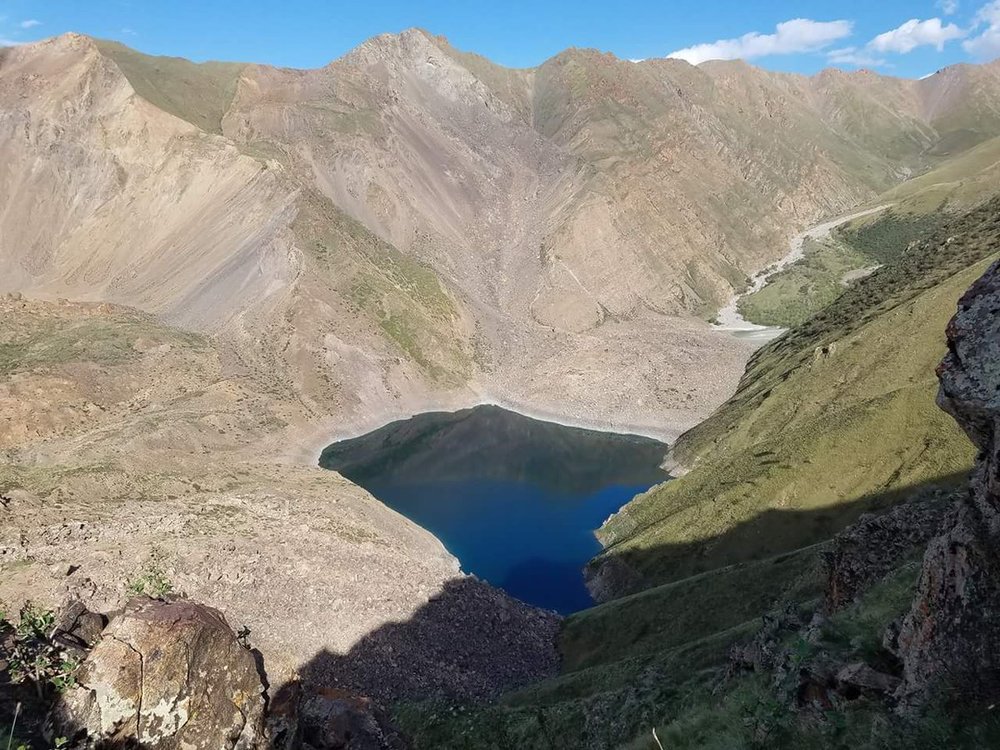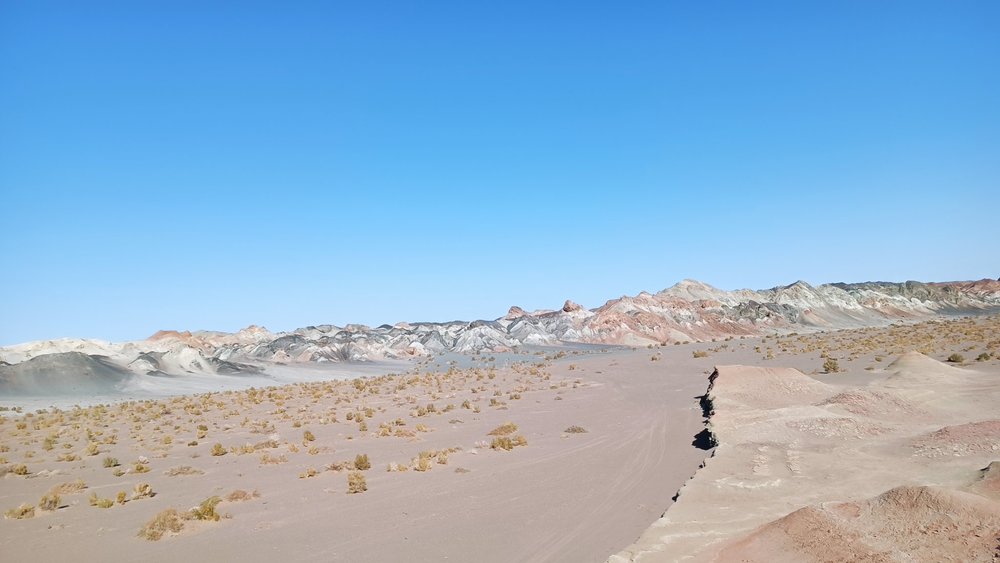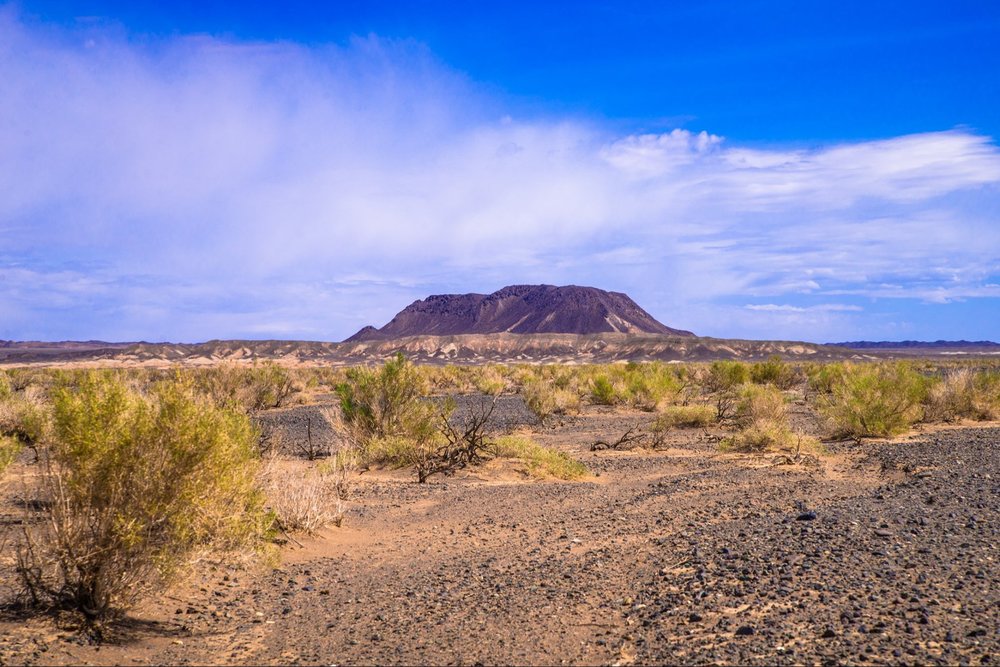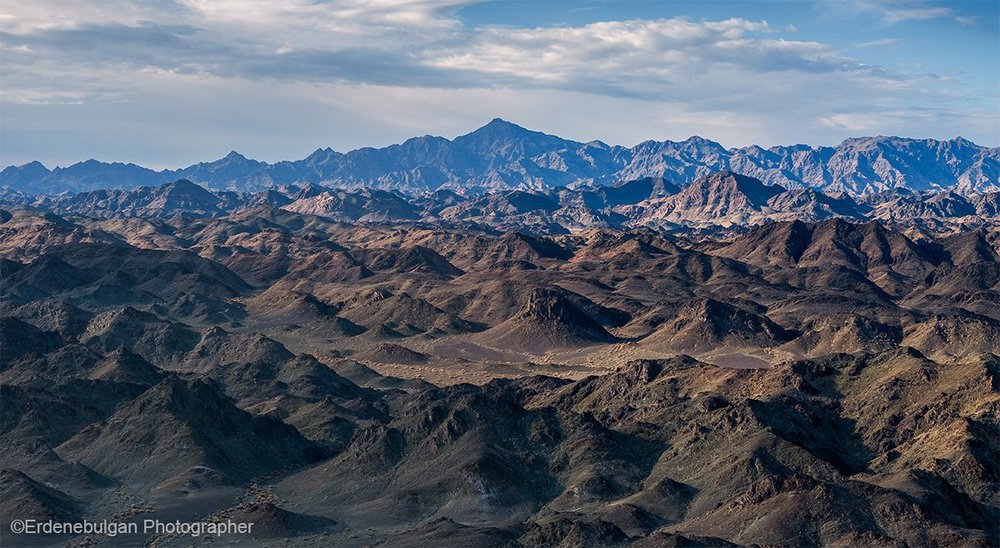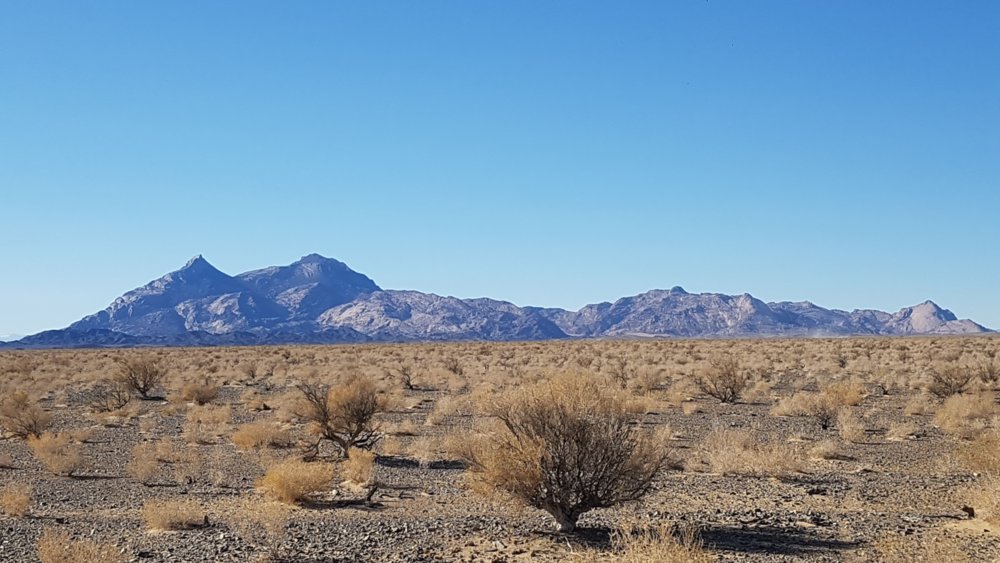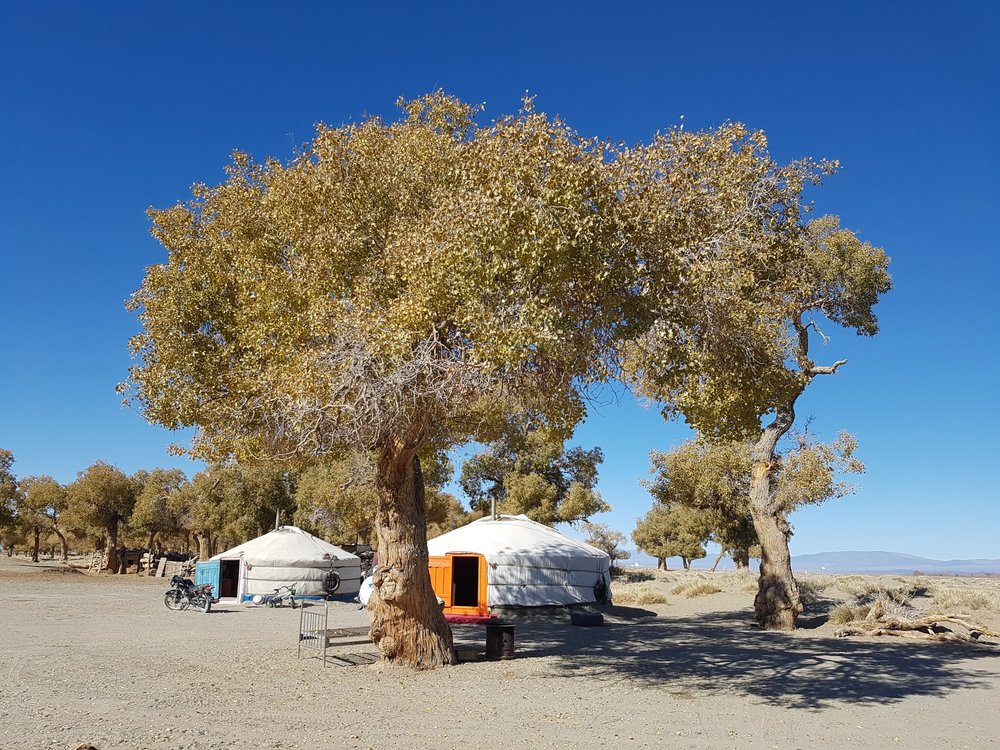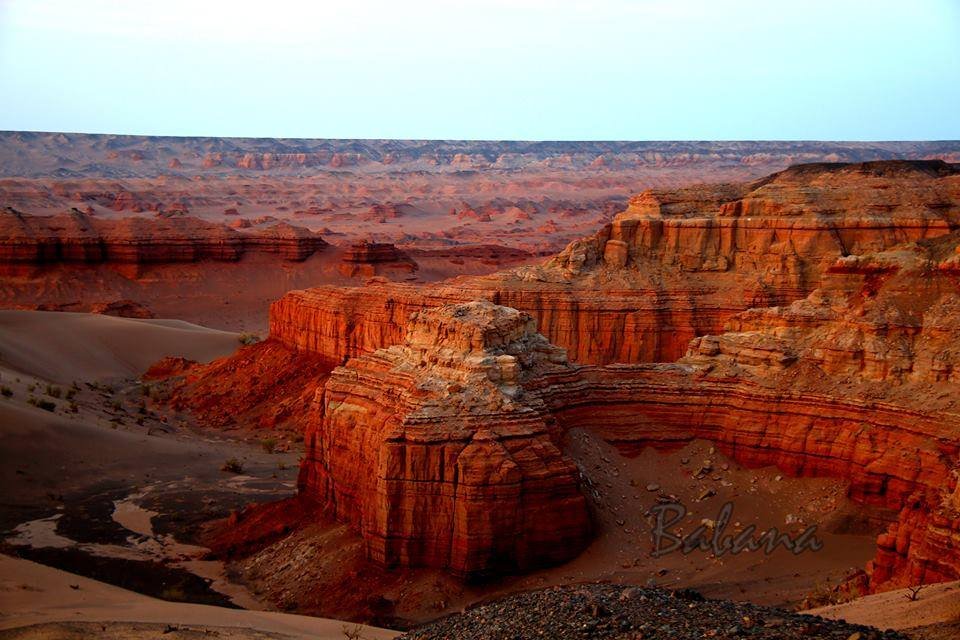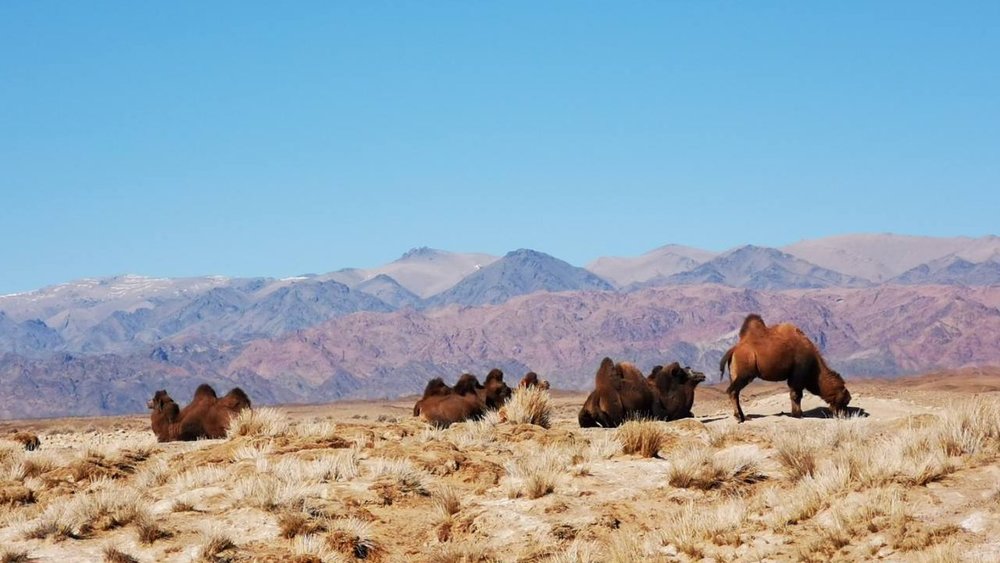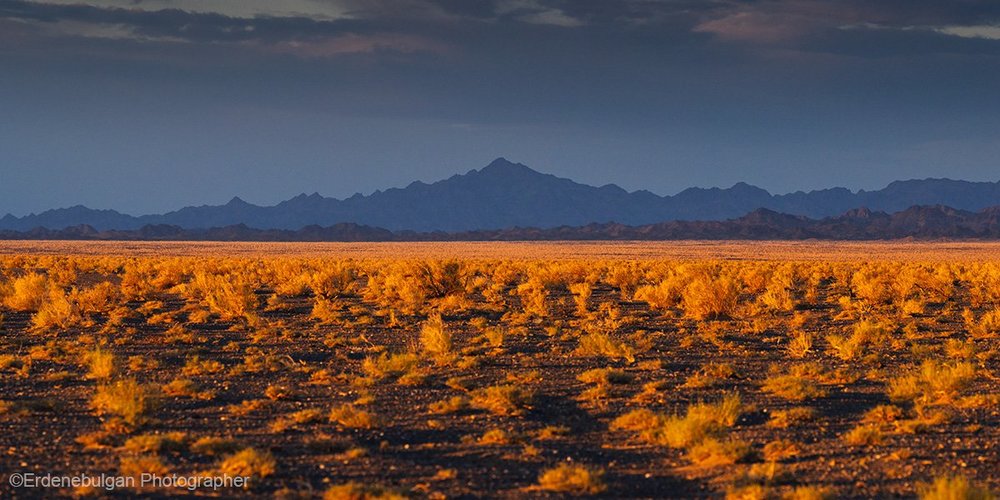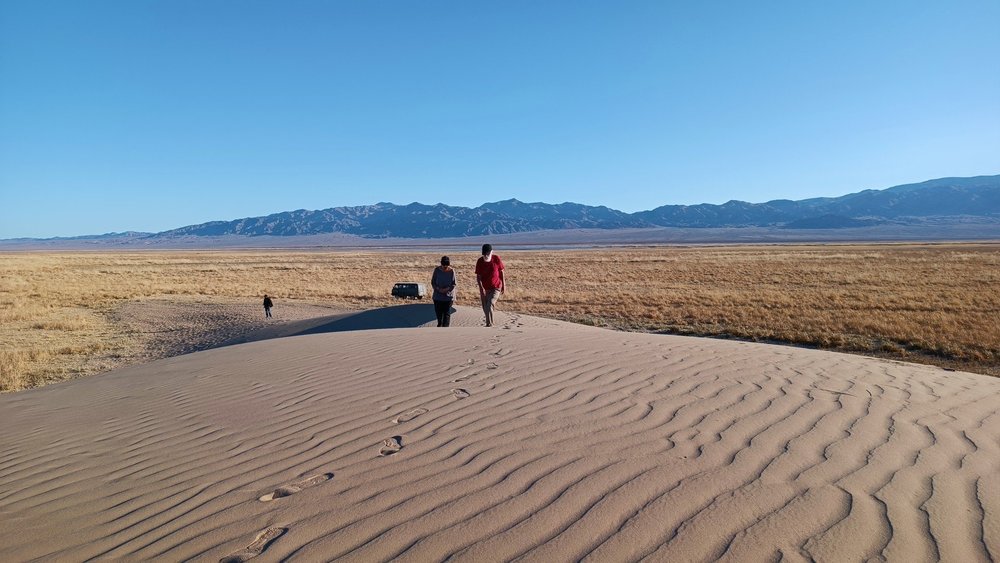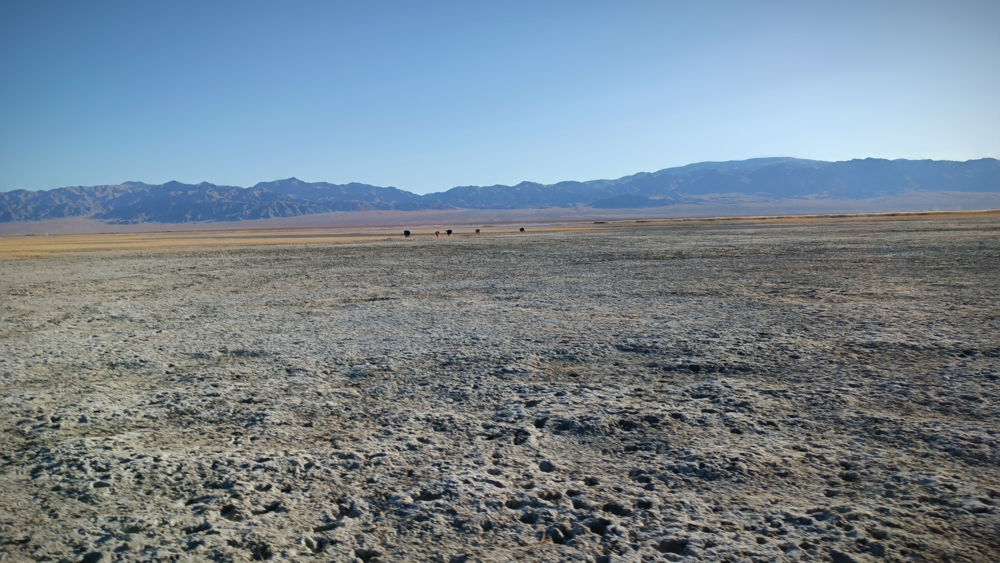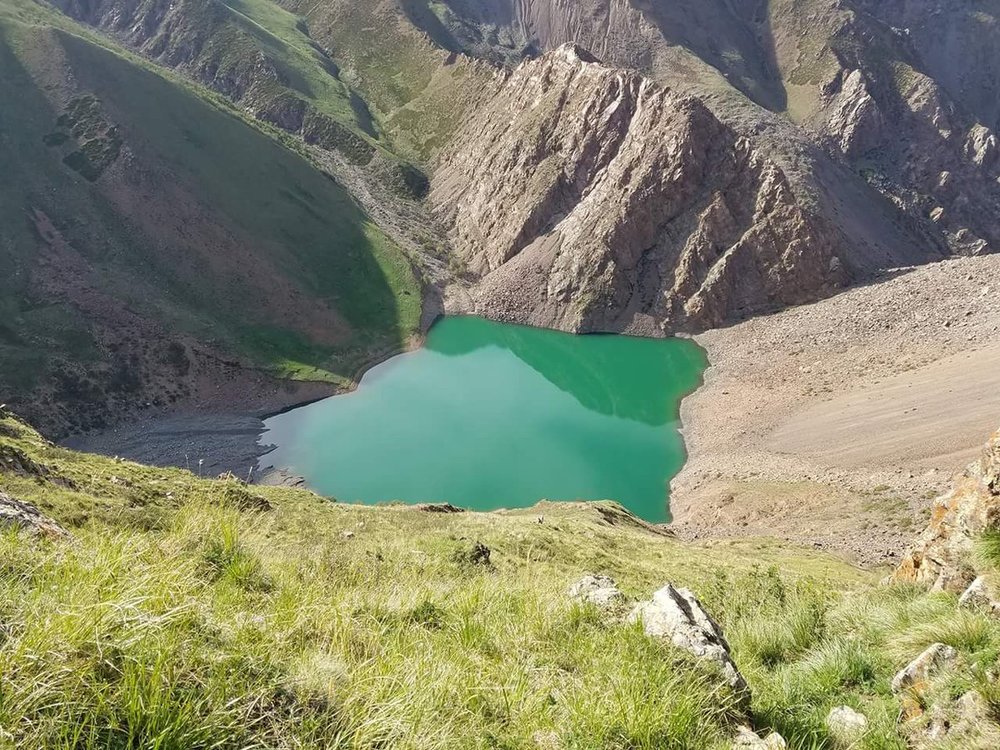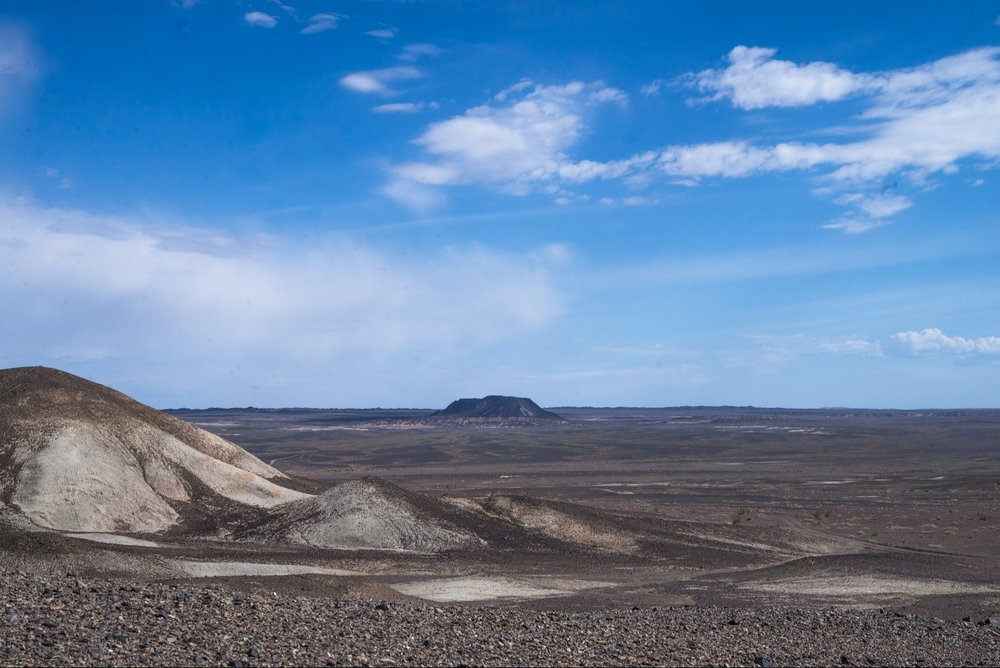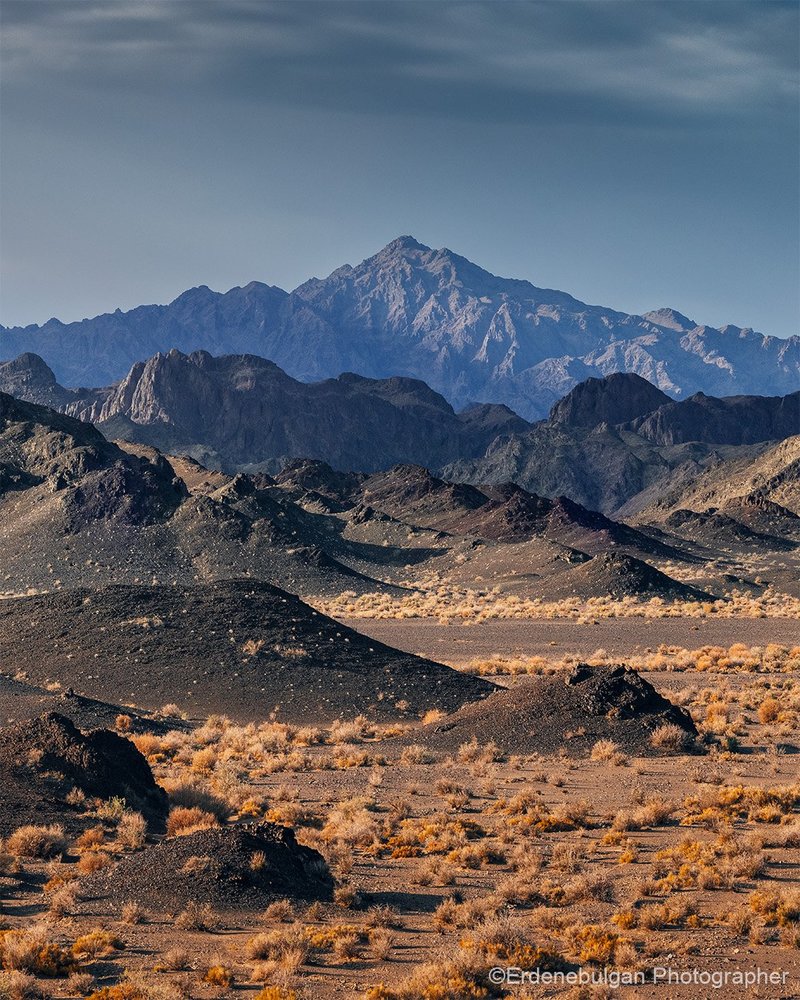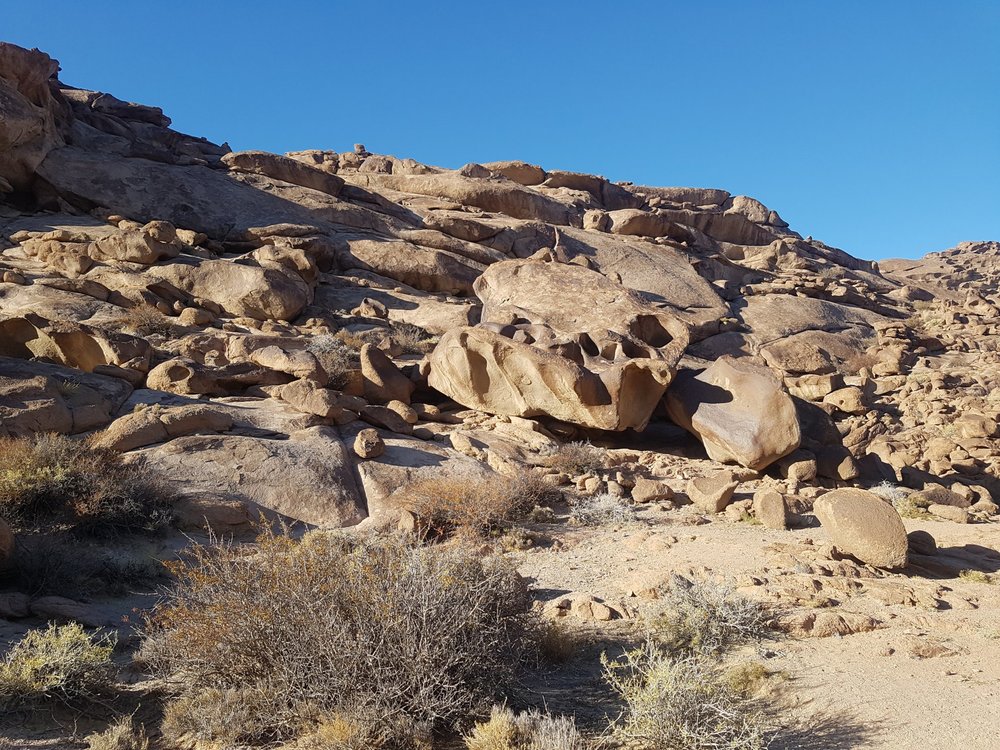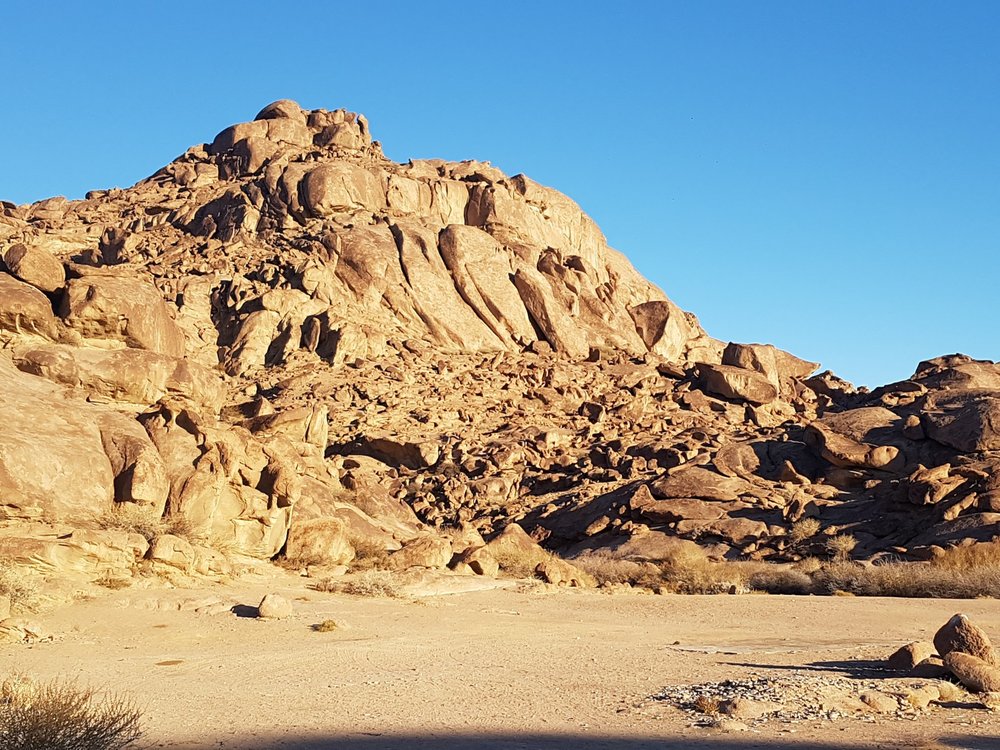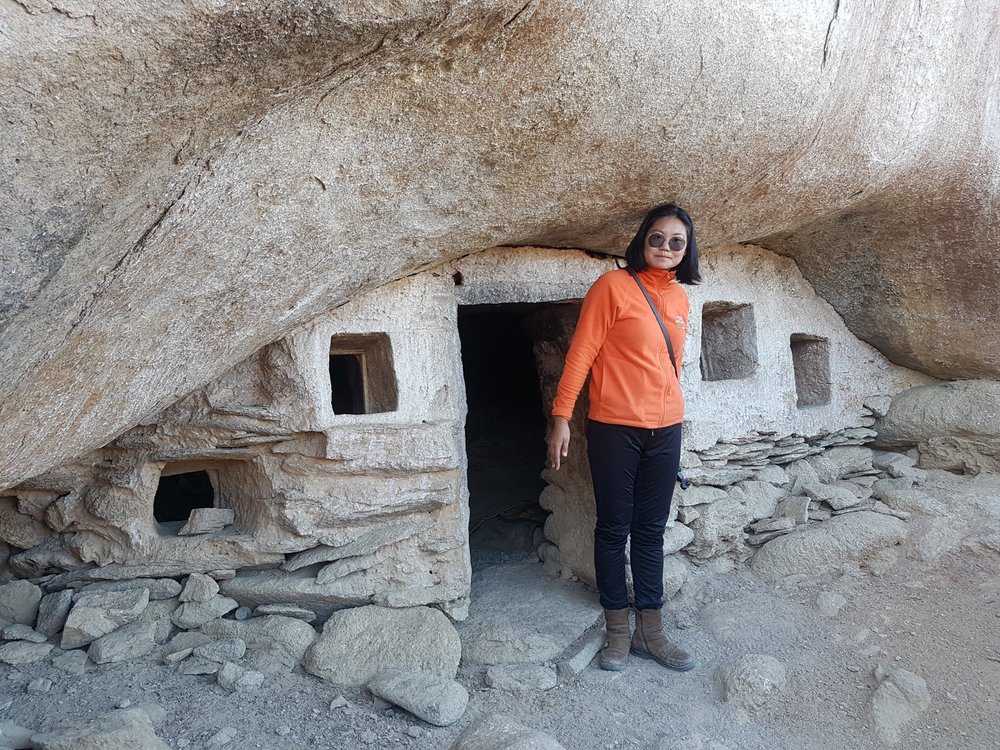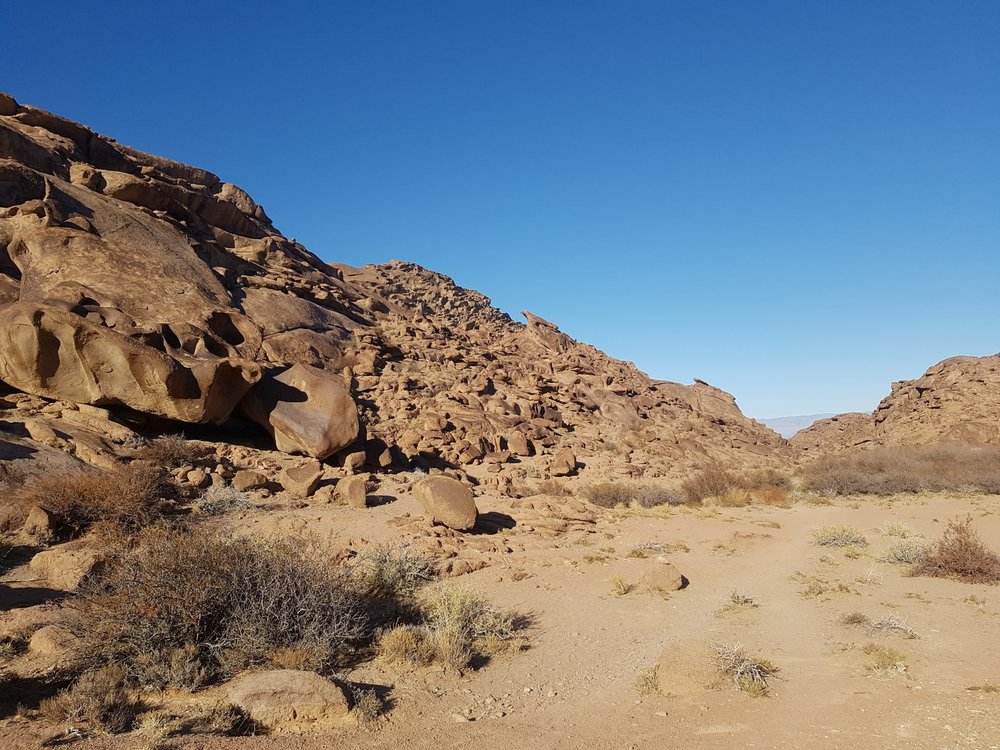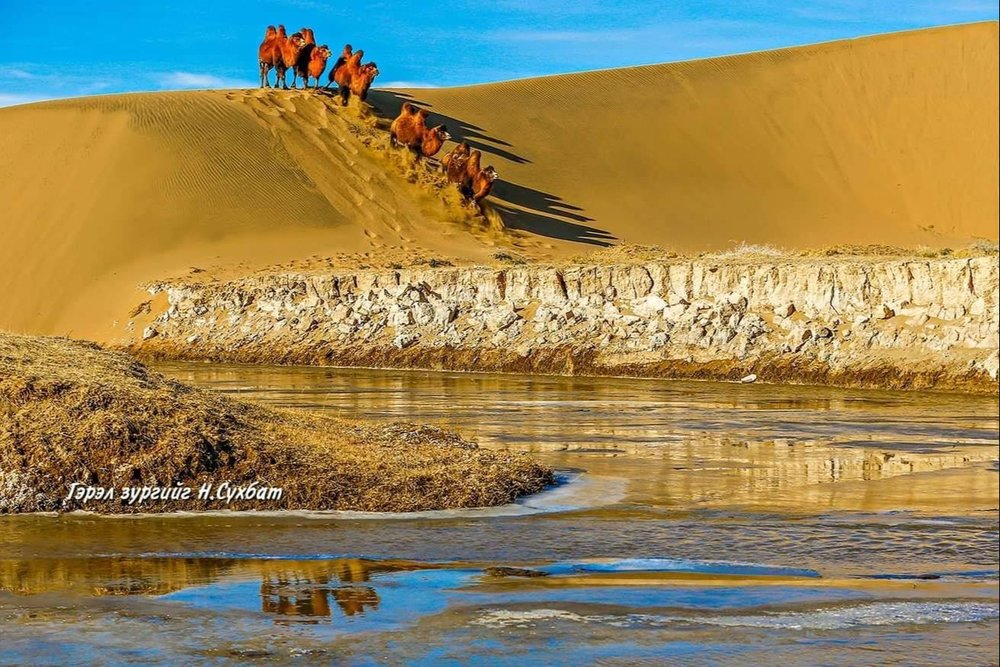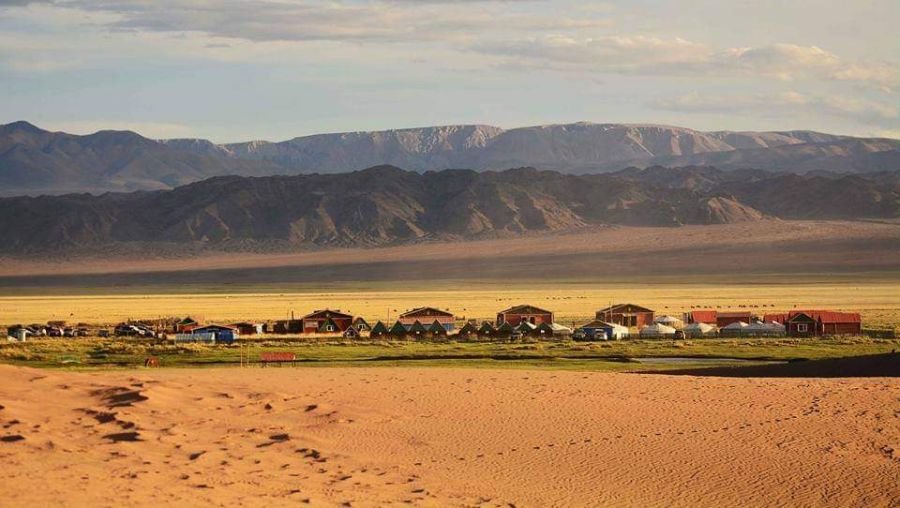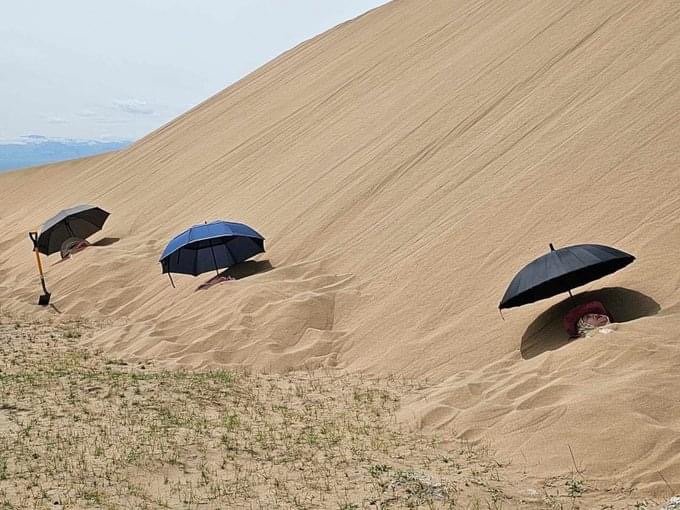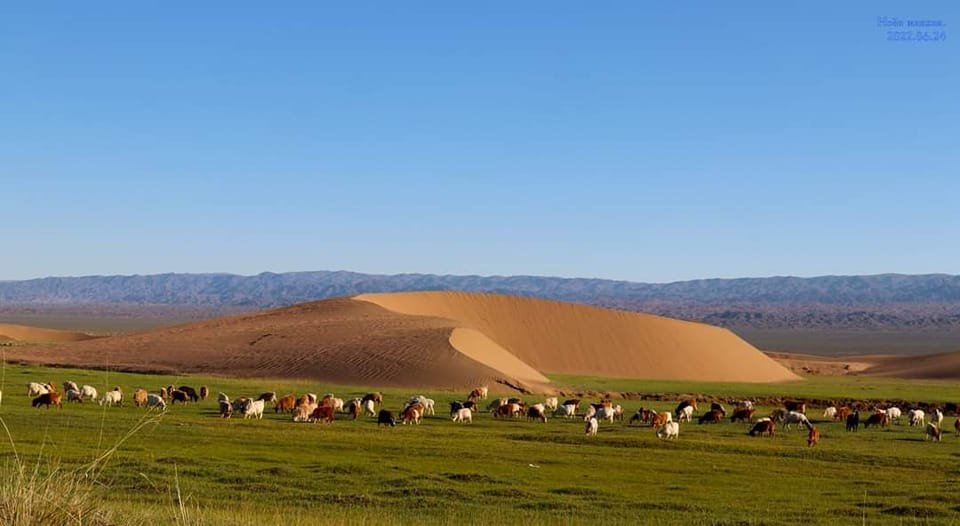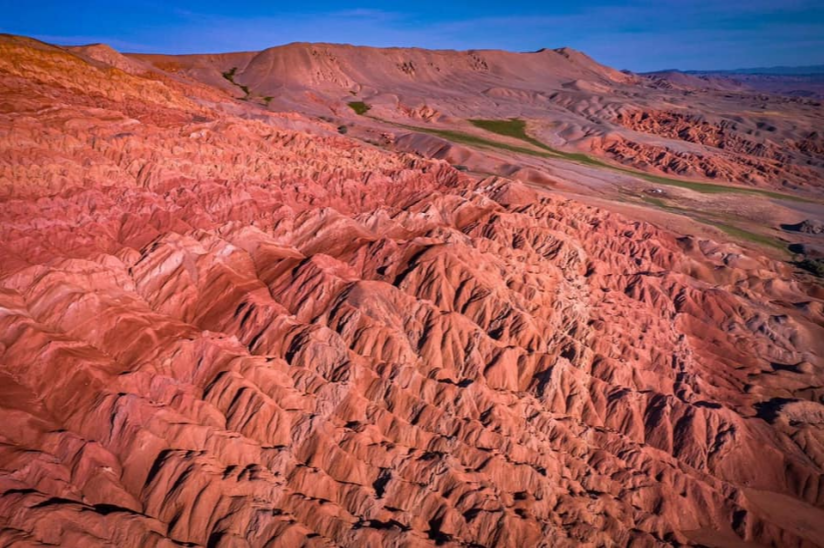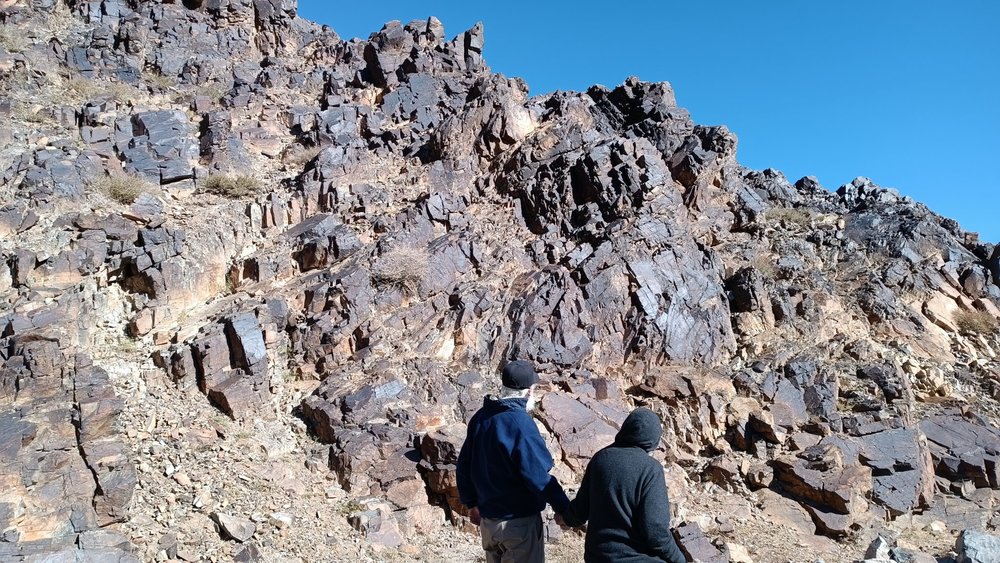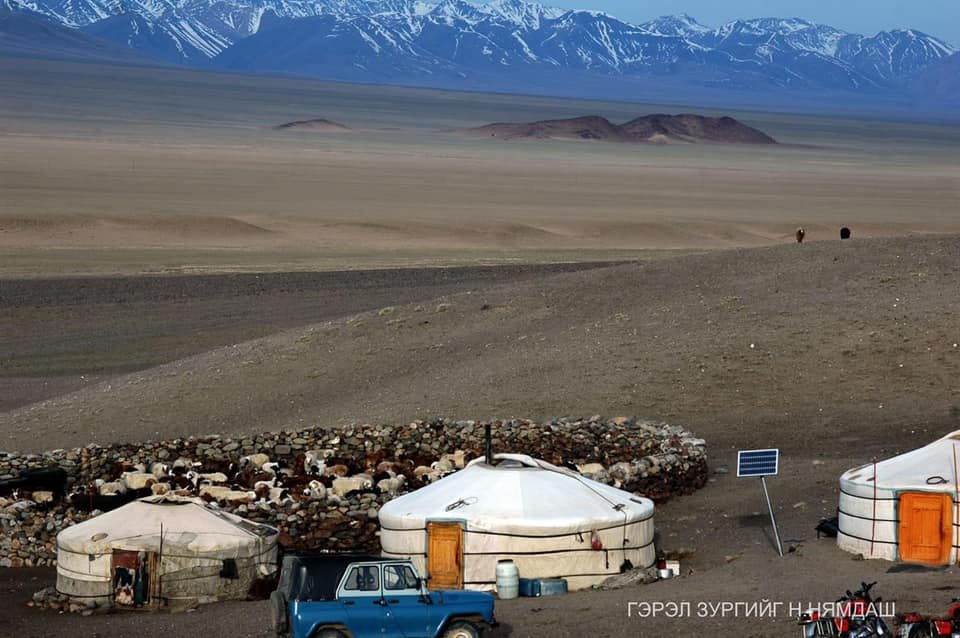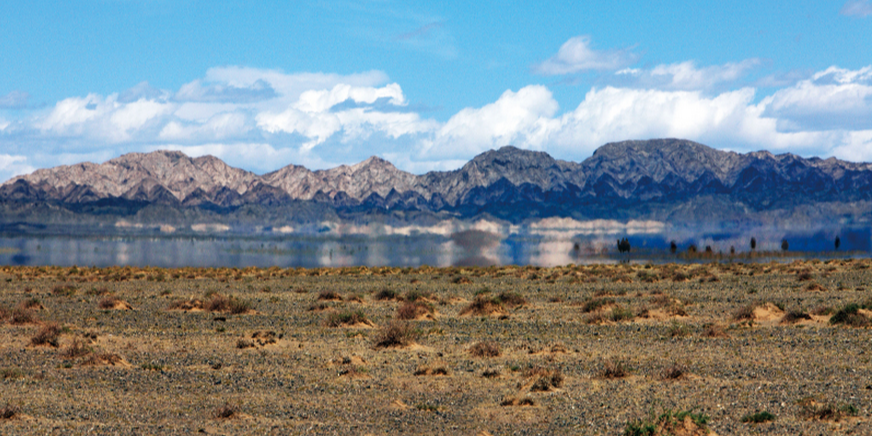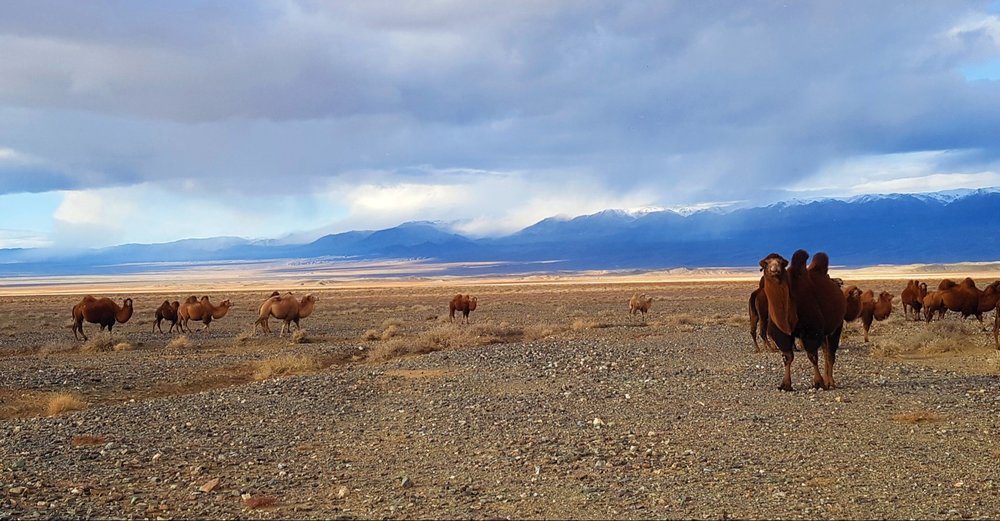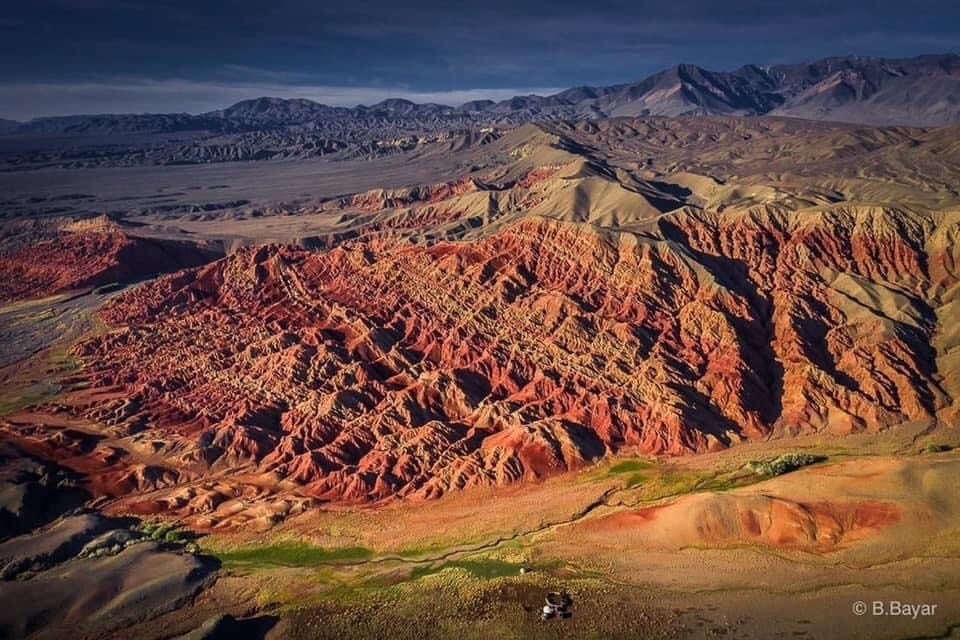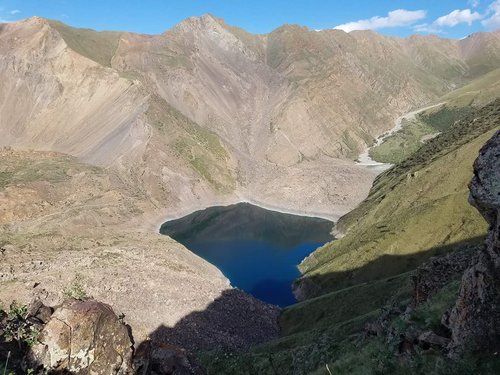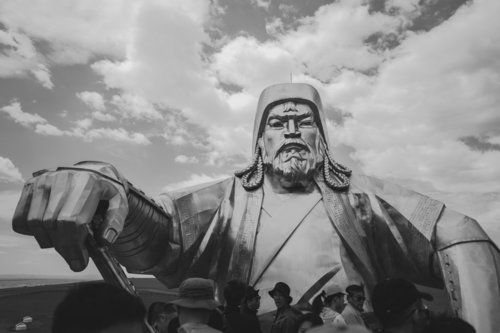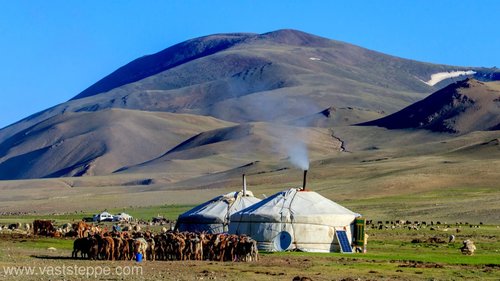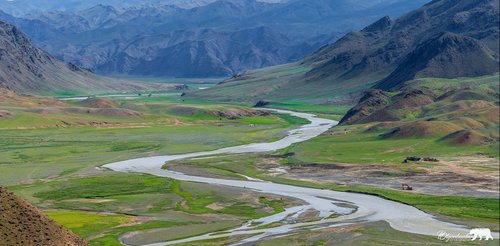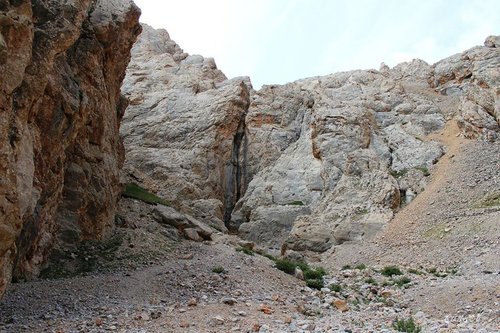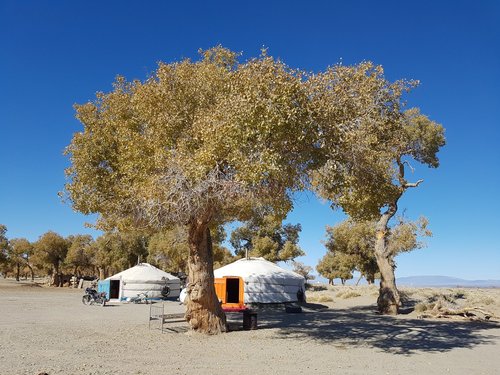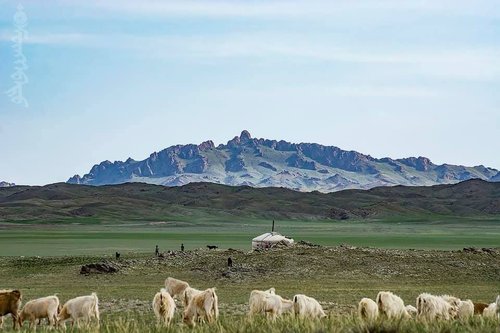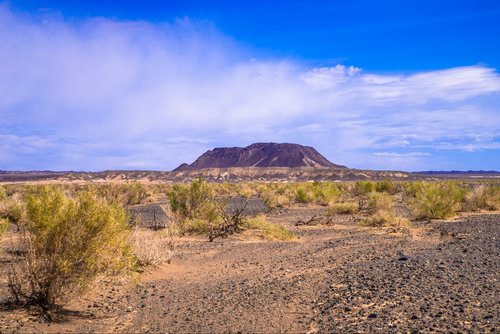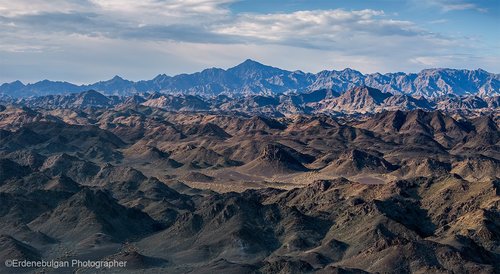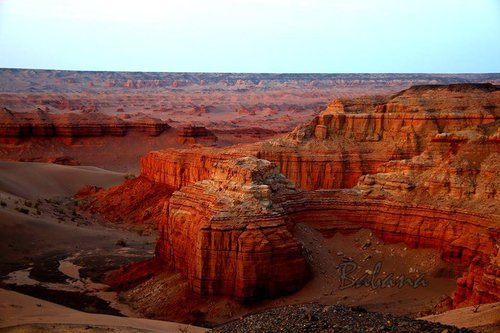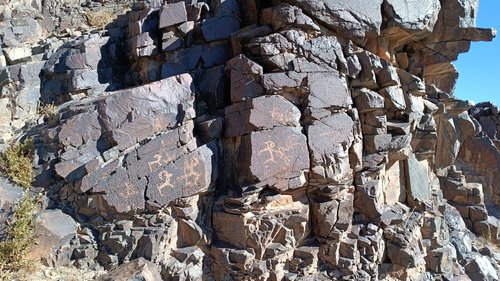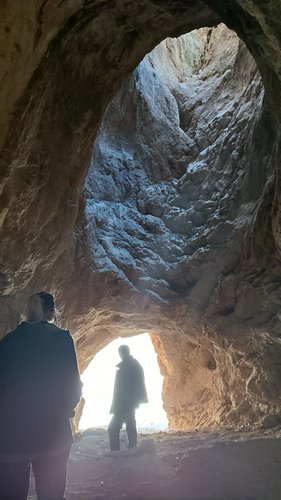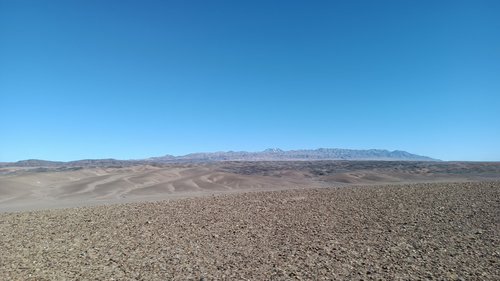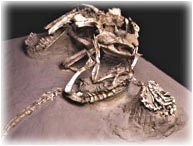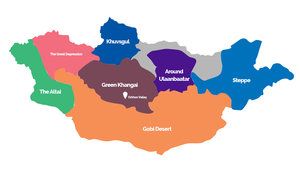Wildlife observation, Bird watching, Camping and Cultural exploration, Sacred Mountains, Energetic places, Canyon discoveries, Spiritual recovery, trekking, and hiking.
A truly amazing epic landscape is begging for your exploration. You will have opportunities to trek in majestic, snowcapped Altai Mountains, up to 3,800m and the scenic Gobi Desert, canyons and cliffs while meeting nomadic people, and experiencing their cultures of horse and camel. Observing a variety of wild species is one of the main emphases of the trip. You are likely to see Wild Ibex, Saiga Antelope and Black Tailed Gazelle, Onager, Wild sheep and might Gobi Bear. Apart from the wild animals we will see Gobi desert's birds.
Mother Mountain and Segs Tsagaan Bogd are sacred places. Those are energetic natural creatures. Trekking distance is up to visitors' interest. Trekking landscapes are ope steppe, high mountains, sand and canyons.
Day 16: Oyu, Nomin Lake Mountain trekking
Trekking through Mountain 1390.m high, total walk 14-15 km.
Day 17: Arvaiheer
WE will drive backward to Ulaanbaatar on the way, we will stay in Arvaiheer village
Day 18: Ulaanbaatar
Drive to back to Ulaanbaatar, have a lunch on the way.
Day 1: Arvaiheer
Today we will drive to Arvaiheer town. Overnight stay in town at hotel.
Day 2: Baidrag river Bayanhongor village
Over night stay
Day 3: Biger red cliffs - sand spa healing
We will drive through Altai Mountains today. Our destination is in the middle of the Khan Taishir Mountain range and Burhan Buudai Mountain ranges. Both Mountains are branches of Altai Mountain. Here we will stay close to the sand spa.
Day 4: Red cliff, sand dune trekking,
Trekking through the cliff.
You will explore another fascinating area with stunning views of Mt Burhan Buudai (3,765m), a sacred place for Mongolian people that is home for many wild species including Ibex and Maral deer.
Tent stay
Day 5: White door waterfall at Mongol Altai Mountain
Drive 80 km. Trekking in Altai Mountain Range visit waterfall.
Day 6: Bayan Tooroi - Gobi Forest
Drive 150 km. This place is home of Gobi Bear Mazaalai
Day 7: Mother Sacred Mountain
The Mother Mountain is located in Gobi Altai province Mongolian western Gobi. It stretches south of the Altai mountain range. Because of its remote, it is an unknown place even for locals. The highest point is 2274 m sea level, which acquires 22475 hectares land. Around 100 species of plants grow in the surrounding area. It is a microecological environment. Ibex, Argali- wild sheep, lynx, lizard and also a lot of rare birds live here. The most attractive thing is the nine-round waterfall pools in rock plain. The local people name it Nine pots. Each situated like 40–50 cm stepping stones down the slope. The first to third pools' diameter is 1-3 meters, forth to eighth pools are 5-6 meters. Those are 2-8 meter deep. You can swim in hot weather and lie on the bank. The next mysterious thing is shapes of rock formations. Such as lizard-shaped rock, hugging couple's shape, head of a pig, sea turtle, chairs of theatre, uvula, womb and even penis shape. You can explore others and name the shapes through hiking. The entire mountain looks like a lying woman from far, so it is named as a Mother mountain. We will visit the cave, which is 24 m squire big. There was a Buddhist monk who lived in a cave here about one hundred years ago. Thus led to this mountain becoming a popular pilgrimage destination. Stay over in tent.
Day 8: Shine Jinst village
Today we will drive through Zarman Gobi with might Altai Mountain view. Stay in hotel
Day 9: Dush - volcanic creature, Green canyon
Ekhiin Gol is the fertile oasis and the hottest spot in Mongolia, situated in the subzone of extremely arid deserts (average annual precipitation is 20-50 mm) of Great Gobi Strictly Protected Area. Based on its pleasant natural conditions the area is used to grow vegetables and fruit, especially melons and tomatoes. Another importance of the area is the most endangered animal Mazaalai, the Gobi Bear still lives here and around, though only an estimated 25 are left. The wide stretched horizon and a huge sky overhead, the sunset and starlit night, and the magnificent sunrise are classic desert scene of the area. Various rare plants densely grow along the oasis, covers an area of 17 km in length and 5km in width, makes the Ekhiin Gol is ideal as Taiga in the middle of Gobi desert.
On the way, we will hike through Green Canyon in the desert and "Dush" volcanic creature.
Day 10: Segs Tsagaan Bogd Mountain trekking
The rich wildlife including rare and endangered species such as Mazaalai, Gobi’s brown bear, wild ass – Khulan, wild camel – Khavtgai, mountain goat ibex – Yangir, wild mountain sheep – Argali, snow leopard – Irves live around “Paradise” of the Gobi desert, the sacred mountain Segs Tsagaan Bogd Khairkhan. Besides rare animals there are various species of medical herbs, pray birds, ancient petroglyphs, dinosaur fossils and fossilized trees found in and around the mountain. So the area is registered in world heritage with its hidden treasures in the Great Gobi Strictly protected area.
Exploring rare animals, cultural and natural galleries of the Gobi and trekking Stay in tent.
Day 11, 12: Hermen Tsav Canyon
Hermen Tsav Canyon trekking,
Hermen Tsav is a canyon with a beautiful oasis, 6 km wide and 15 km in length, located at a distance of 400 km from Dalanzadgad city. The canyon is 30m deep with natural formations of cliffs and looks like the remains of ancient cities and temples or of icebergs drifting on the ocean, even like huge dinosaurs, turtles, and crocodiles. Scientists have defined it as an inland sea bed from some 200 million years ago. Hermen Tsav is known not only for its beauty of natural formation but also by its trove of dinosaur fossils.
Stay in tent.
Day 13: Bichigt Petroglyphs valley
The Bichigt valley is a natural art gallery. Stacks of black rock walls of narrow Bichigt valley are covered in amazingly well-preserved petroglyphs from the Bronze Age some 3000 years ago. Petroglyphs are painted from 3000 B.C to 8th-century A.C by talented primitive artists. This rock painting belongs to the biggest ancient art gallery in Asia, the second biggest in the world. Scratched into the rocks' oxidised black surfaces are sun symbols, depictions of men and women, hunters, deer, wolves, gazelles, ibexes, scorpions and even wheeled carts. Exploring them requires time and liquid intake. Stay over in tent. (Bayanhongor province)
Afternoon, we will walk through the valley. Stay in a hotel.
Day 14: White Cave, Orog Lake
White cave in Ih Bogd mountain. It is wind blasted surface of a pale-coloured rock. Walking up a gorge there is 5 m wide cave entrance. Cave has 3 chambers. Total long is 38 meters. First chamber's ceiling towered 10 meters to a small opening to the sky. The cave's dusty walls are covered in pink crystals. In hot Gobi, this cave is a nice place to get cool. From this cave, the oldest Paleolithic or Early Stone Ages (7500000 years ago) findings are founded. Researchers recently found more than 800 stone artefacts. Those are in Mongolian national history museum in Ulaanbaatar. Back then, 7500000 years ago, the climate was considerably wetter, and the environment is teeming with primitive people and wild animals. This cave was the home of primitive.
Orog lake:
The lake is a good place to watch birdlife. It is nestled in the foothills of Ikh Bogd Mountain (3957m) in Bogd sum at Bayankhongor province.
Day 15: Ih Bogd Mountain
Base camp of Oyu, Nomin lake in Ih Bogd Mountain
It is in the Gobi Altai Range that Ikh Bogd mountain is found over its 50 km long. Set in a land where steppe and desert come together, this rock formation imposes itself from its 3957m above sea-level, offering hence diverse contrasts with the different existing reliefs. Following an earthquake of a magnitude 11, which hit the region in the 50’s, a 270 km fault emerged going from the North of Baga Bogd to the top North of Bayan Tsagaan.
Consequently two small lakes were created : Oyu - it is green colored lake and Nomin - it is blue colored lake. The first one stretches over 200m for 170m wide, reaching a depth of 25m. As for Nomin lake, it covers an area of 275m long against 100m wide, with a low depth of 14m.
| Participants | 2 | 1 | 3 | 4 |
| Price Per Person | 3260 $ | 6500 $ | 2900$ | 2500$ |
| Included | Not included |
|
| Start date | End date | Available | Status | Price | |
| 05/05/2020 | 06/16/2020 | 10 | Confirmed | 990$ | |
| 05/05/2020 | 06/16/2020 | 10 | Confirmed | 990$ |
For your journey in Mongolia, it is possible joining a fixed departure tour with a group, which has the advantage of providing a friendly atmosphere and to let you benefit from the best price. Our groups are composed of an average of 3 to 10 participants.
Our departures are confirmed without any additional fees to the price of 990 Euros from a minimum of 3 participants. If you are only 2 participants registered for this particular departure however, we can still organize the tour for you against an added fee of 300 Euros per person.
-
Day 16: Oyu, Nomin Lake Mountain trekking
-
Day 17: Arvaiheer
-
Day 18: Ulaanbaatar
-
Day 1: Arvaiheer
-
Day 2: Baidrag river Bayanhongor village
-
Day 3: Biger red cliffs - sand spa healing
-
Day 4: Red cliff, sand dune trekking,
-
Day 5: White door waterfall at Mongol Altai Mountain
-
Day 6: Bayan Tooroi - Gobi Forest
-
Day 7: Mother Sacred Mountain
-
Day 8: Shine Jinst village
-
Day 9: Dush - volcanic creature, Green canyon
-
Day 10: Segs Tsagaan Bogd Mountain trekking
-
Day 11, 12: Hermen Tsav Canyon
-
Day 13: Bichigt Petroglyphs valley
-
Day 14: White Cave, Orog Lake
-
Day 15: Ih Bogd Mountain
Total distance: 3500km
